Top 7 Places to Visit in Panipat – Historical, Tourism & Markets

Table of Contents
Steeped in history and culture, Panipat is a treasure trove of ancient tales and monuments. Known for its pivotal battles, this city also boasts a rich heritage linked to the Mahabharata, making it a fascinating destination for history buffs and curious travellers alike.
From the architectural marvels like the Kabuli Bagh Mosque to the spiritual sanctity of the Tomb of Bu-Ali Shah Kalandar, Panipat’s landscape is dotted with sites that are both captivating and culturally significant. You’ll find yourself transported back in time as you explore these centuries-old attractions, each with a story to tell.
Places in Panipat That Are a Must-Visit
With a diverse religious fabric, Panipat offers a unique blend of spirituality and history. Whether it’s paying respects at the Devi Temple or marvelling at the peaceful environs of the tombs, your journey through Panipat promises to be an enriching experience that resonates with the soul of this ancient city.
1) Kabuli Bagh Mosque
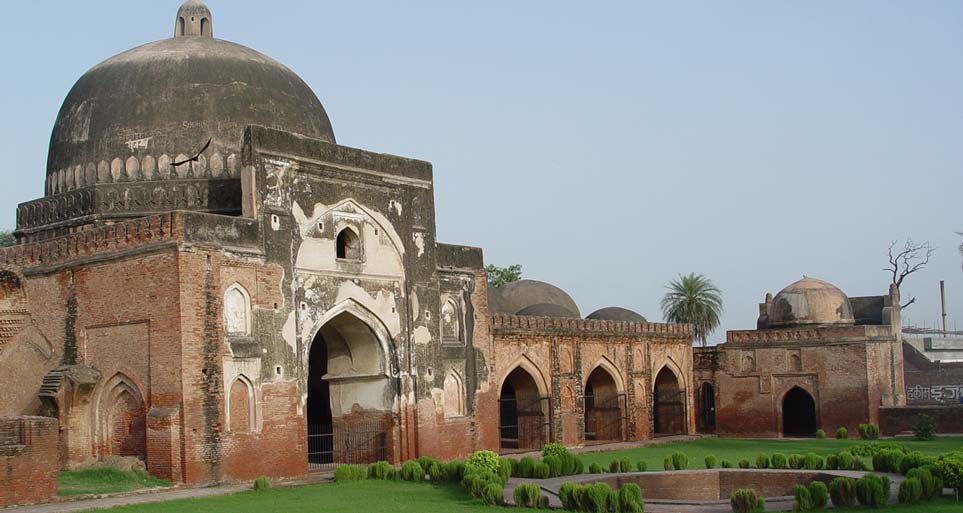
When you step into Panipat, the Kabuli Bagh Mosque beckons as a testament to historical marvels. Conceived by Babur post his victory over Ibrahim Lodi, this mosque marks the inception of Mughal architecture in India.
Built with red sandstone, the mosque’s gate showcases intricate carvings that arch into the realm of ancient artistry. An inscription on the monument bears the name of Babur, detailing the origins and the craftsmen behind this historical edifice.
Architectural Significance
- The mosque is accentuated with octagonal towers at each corner
- A square-shaped main prayer hall with annexes on the sides
- The northern entryway stands as a prominent feature
During Humayun’s reign, the Chabutra-e-Fateh Mubarak was added, which literally translates to ‘The Platform of the Auspicious Victory.’ This addition is more than just a structure; it’s a chronological bookmark in the grand saga of Mughal history.
Historical Importance
Kabuli Bagh Mosque isn’t just another destination; it’s a piece of the cultural tapestry that Panipat weaves for its visitors. The mosque with its lush gardens, known as ‘Bagh,’ pulls you into a narrative steeped in the past. It’s a place where one can marvel at how the landscapes of war have transformed into serene havens for reflection.
A stroll through the gardens adjacent to the mosque allows you to discover tranquillity that’s rare in the bustle of the city. The Kala Amb Park, located a mere 8 km away, continues this narrative as the site where the Third Battle of Panipat took place.
If you’re someone fascinated by India’s layered history, the Panipat Museum is a stop that can’t be missed. Here, you can delve deeper into the rich tapestry that has been woven over centuries.
The Kabuli Bagh Mosque remains a pivotal historical site, inviting not just tourists but anyone keen on unravelling the tales of time. Its ability to stand as a silent witness to the tumultuous waves of history while still holding onto its beauty is what draws countless visitors year after year.
2) Kala Amb
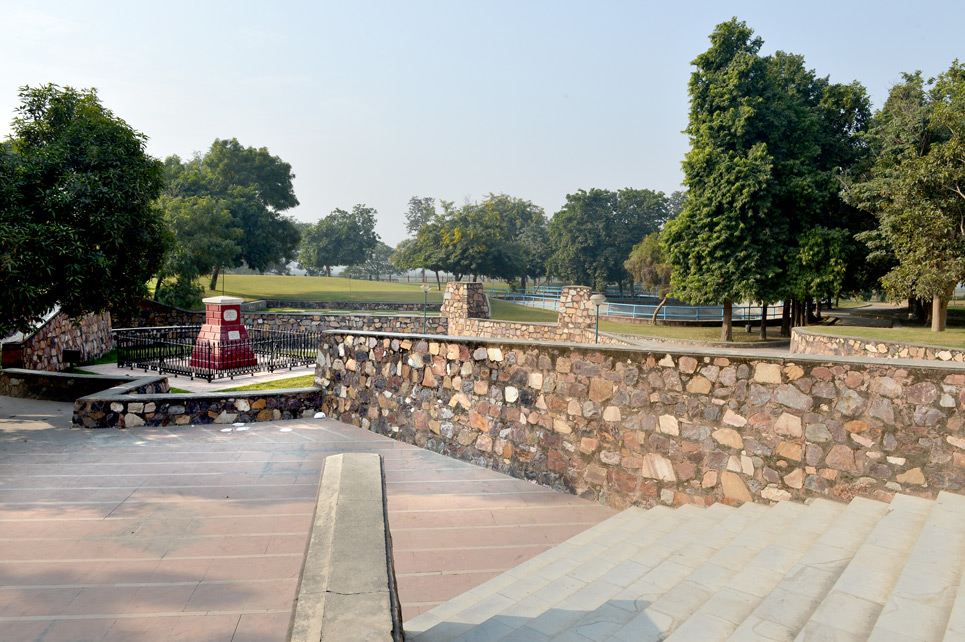
When you’re piecing together the legacy of Panipat, the significance of Kala Amb can’t be understated. Just 8 km from the city, this historical spot marks where the fateful Third Battle of Panipat was fought in 1761. Steeped in rich Indian history, Kala Amb is not just a site; it’s a testament to the valour and strategic prowess of the time.
The name ‘Kala Amb’ translates to ‘Black Mango Tree’, derived from a particular tree under which the Maratha king Sadashivrao Bhau commanded his troops. Although the tree no longer stands, the site still serves as a poignant reminder of the battle. Visiting Kala Amb, you’re stepping onto hallowed grounds where the course of Indian history changed dramatically in the face of great adversity.
Here is a quick snapshot of Kala Amb’s location:
| Distance from Panipat City | Site Name |
|---|---|
| 8 km | Kala Amb Tree Site |
Surrounding the historic site is the Kala Amb Park, a space designed to honor the memory of those who fought in the battle. The lush greenery of the park offers a peaceful retreat where you can reflect on the past while enjoying the tranquillity of nature.
Explore the area and you’ll find informative plaques and memorials dotting the park, each providing insights into the importance of this landmark. The atmosphere at Kala Amb is often quiet and introspective, a striking contrast to the fierce battle that once engulfed the region.
For history buffs and casual tourists alike, Kala Amb is a profound stop in your Panipat journey. The legacy of the battle and the park’s serene environment make it a unique blend of education and relaxation—elements that capture the essence of Panipat’s varied attractions.
3) Panipat Museum

When you’re exploring the rich tapestry of Panipat’s history, a visit to the Panipat Museum is essential. This museum serves as a beacon of knowledge, providing a deep dive into the region’s archaeological finds and historical narratives. You’ll find it’s more than just a building; it’s a passage through time.
The museum’s collection is vast and varied, with enlarged photographs of miniatures sourced from esteemed institutions like British and New Delhi museums. These images offer you a close-up view of the artwork that narrates the stories of Panipat’s significant battles. Imagine walking through the galleries, where every piece of art bridges the gap between the past and the present.
- Showcasing Haryana’s Culture: The museum doesn’t just focus on the battles. It gives you an insight into the local culture with displays of antiques, pottery, jewellery, and armour. These artefacts reflect the craftsmanship and daily life of Haryana’s ancestors.
- Educational Experience: Designed to educate, Panipat Museum takes you on an educational journey through various exhibitions. They lay out the history of the region, highlighting how the city has evolved over centuries.
The experience at the Panipat Museum isn’t just about observing; it’s about engaging with history on a personal level. Each artefact and photograph tells a story, allowing you to piece together the emotional and cultural jigsaw of Haryana’s past. The museum isn’t static – new insights and artefacts often add layers to the city’s ongoing tale.
Naturally, you’ll want to set aside enough time to truly appreciate everything the museum offers. The stories embedded within its walls are not just remnants of the past; they speak volumes about the resilience and ingenuity of the people who shaped this land. As you move from one exhibit to another, you’re constantly reminded of the city’s significant role in the broader context of India’s history.
Remember, the Panipat Museum provides a crucial educational perspective that enriches your understanding of both the city and the state of Haryana. It’s a place where history isn’t just told; it’s felt and remembered through the lenses of those who lived it.
4) Tomb of Bu-Ali Shah Kalandar
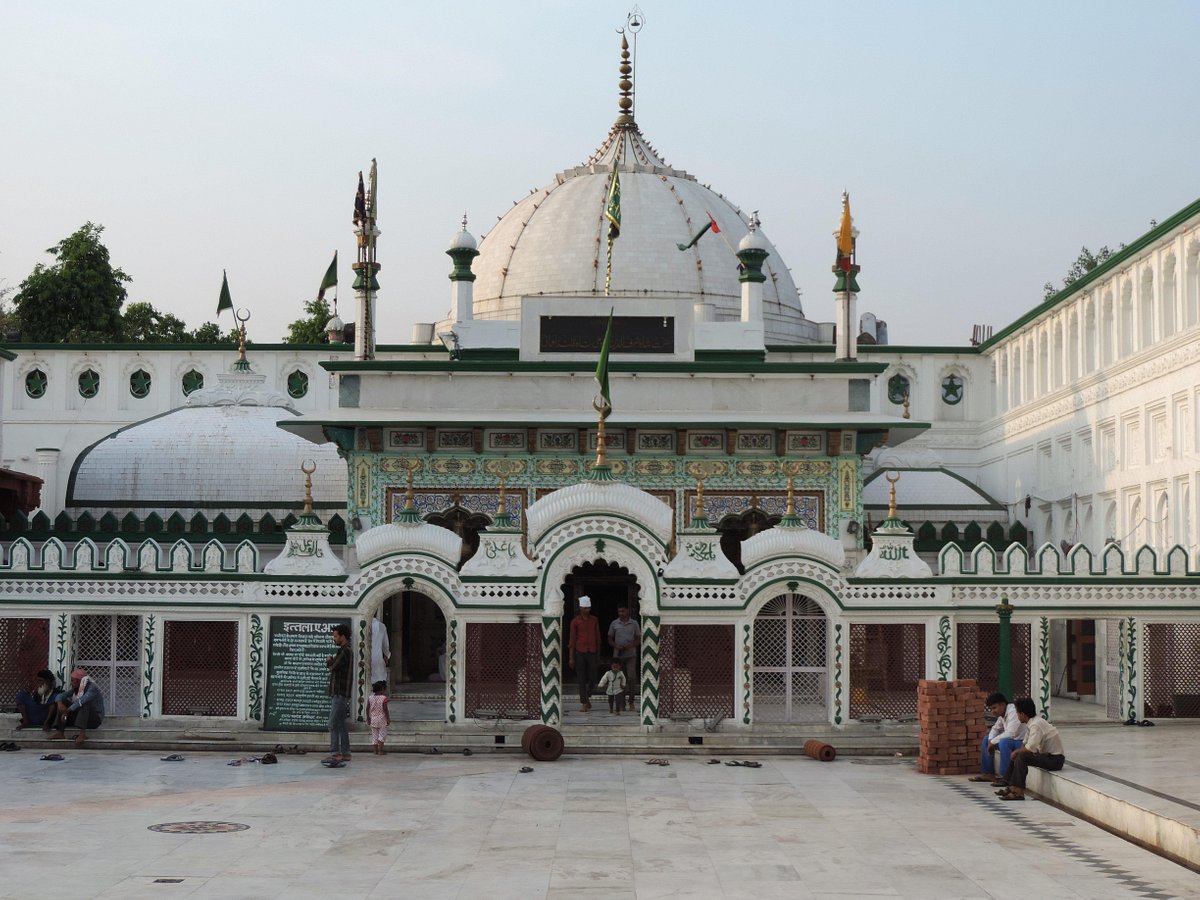
As you delve into the history-rich tapestry of Panipat, the Tomb of Bu-Ali Shah Kalandar stands out as a testament to the enduring spiritual legacy of the region. The tomb is not only an architectural marvel but also a pilgrimage site, drawing visitors who seek a moment of tranquility and a deeper connection to the past.
Shaykh Sharfuddin, better known as Bu-Ali Shah Kalandar, was a revered saint of the Chisti order. The significance of his impact on the spiritual landscape is evident in the lasting reverence that envelops his resting place. His father, Shaykh Fakhar Uddin, was also a notable scholar and saint, which underscores the profound lineage of wisdom that Bu-Ali Shah was born into.
The phrase ‘kalandar’ is often associated with mysticism and saintliness in Sufism. It signifies a life devoted to spiritual asceticism and artistic expression, themes that are palpably felt within the confines of the tomb.
- The tomb’s design features elements that are evocative of the religious architecture typical in India, offering you an immersive glimpse into the past.
- This sacred site is nestled in Panipat’s locale dubbed Qalandar ch, an area that resonates with the saint’s influence.
Visiting the tomb provides context to the layered narrative of Panipat. Beyond the battleground stories, it showcases a facet of the city steeped in spiritual devotion and mystique. The allure of the Tomb of Bu-Ali Shah Kalandar is in its tranquil environment and the cultural insight it provides into the lives of the saints that once walked these lands.
To truly embrace the essence of this place, allow yourself ample time to wander through the calm expanses of the tomb. Reflect on the heritage that has shaped Panipat as you stand amidst a sanctuary that has weathered centuries, yet still emanates peace and spirituality.
5) Tomb of Ibrahim Lodhi
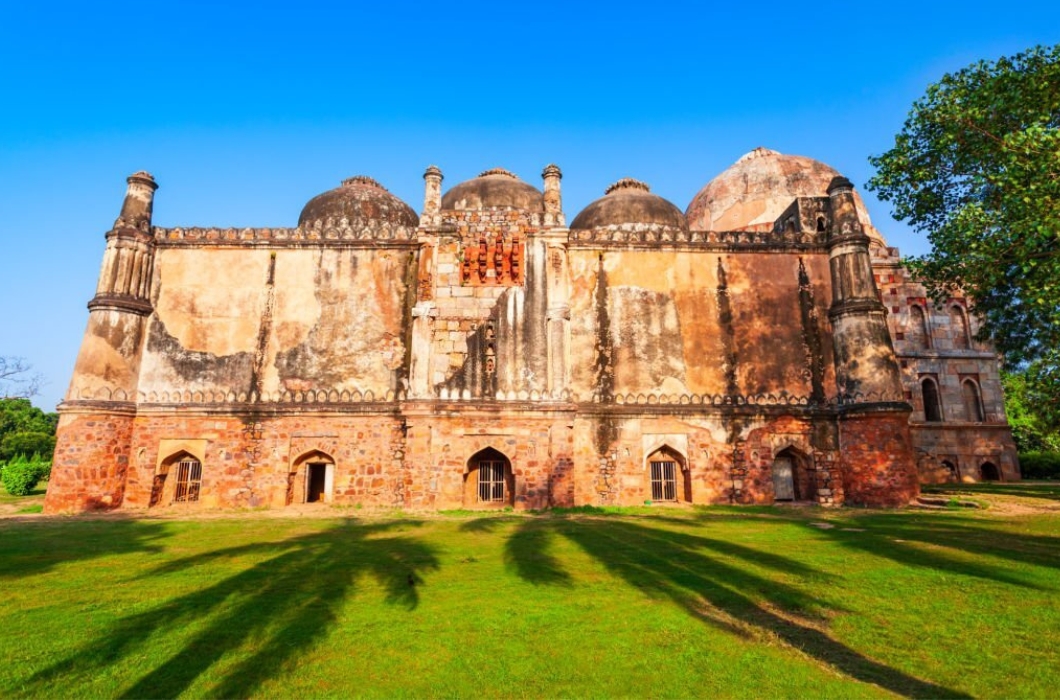
When wandering through Panipat’s deep-seated history, you’ll find the Tomb of Ibrahim Lodhi standing as a stark reminder of the vicissitudes of time. The tomb is approximately 30 minutes from Kala Amb Park, quietly narrating the tale of Ibrahim Lodhi, the last ruler of the Lodi dynasty. His story came to an abrupt end in April 1526 when Babur, the Turco-Mongol warlord, struck a decisive blow in the famous First Battle of Panipat.
There is a tangible sense of history enveloped within the walls of this structure. The tomb is predominantly built of red-coloured burnt clay bricks, commonly known as lakhori bricks. It’s this utilitarian, yet historically significant material that gives the tomb its distinguished look.
As you explore the surroundings of Ibrahim Lodhi’s tomb, you are encouraged to visit its serene garden. This garden, despite being overshadowed by the gravitas of the tomb, is a place of tranquility where you can find solace away from the bustling city life. Here, the past and present converge, offering a space to reflect on the epochal shifts that have transpired.
Beyond the tomb, you’re certain to enjoy the Tau Devi Lal Bio Diversity Park. This modern retreat is renowned for its leisure facilities rather than its historical relevance. It’s a hive of activity where families and friends converge to enjoy the simpler pleasures in life, such as a picnic or an invigorating morning jog. If you’re a nature enthusiast, make sure to bring your camera for some birdwatching – a popular pastime at the park.
In the endearingly historical city of Panipat, these places stand as testament to a past woven with the threads of cultural narratives and epic battles. They serve as a physical archive, capturing moments etched within the annals of time, eager to be explored by your discerning eye.
Remember, Panipat is not only about battlegrounds; it’s a rich tapestry of heritage sites waiting to be discovered, each with a story that transcends the ages.
6) Devi Mandir in Panipat

When exploring the rich tapestry of religious sites in Panipat, you’ll find the Devi Mandir to be a beacon of spiritual ambiance. This temple, embracing the essence of divine femininity, stands out as a preeminent pilgrimage site against the backdrop of Panipat’s diversified religious landscape.
Devotees and tourists alike flock to Devi Mandir, drawn by its reputation for fulfilling the wishes of those who come with a pure heart. Stories of miraculous happenings at the temple circulate among locals, which adds to the temple’s allure. Architecturally, the temple embodies traditional Hindu design with an infusion of local artisanship.
The location of Devi Mandir amidst the bustling streets of Panipat offers you a chance to witness the everyday vibrancy of the town. Visits to this sacred sanctuary are usually accompanied by a peaceful stroll through the surrounding areas, which are dotted with small vendors selling religious paraphernalia and traditional foods.
During significant Hindu festivals, the Devi Mandir becomes a hub of celebration with rituals and prayers amplifying the serene atmosphere. The air buzzes with chants and the aroma of incense, providing a truly immersive cultural experience. Navratri, in particular, sees the temple adorned with lights and flowers as it prepares to host a surge of worshippers honouring the Goddess.
For those interested in religious tourism, the temple’s importance is twofold: it is a testament to the faith of the people and a living museum of local customs. When planning your visit, remember to respect the temple’s guidelines which aim to preserve the peaceful aura of this sacred space.
The Devi Mandir is more than just a place of worship; it’s a place where centuries-old traditions continue to thrive in the modern age. Whether you’re seeking a spiritual journey or simply looking to absorb local culture, the temple provides a profound sense of connection to the history and heart of Panipat.
7) Salar Gunj Gate in Panipat
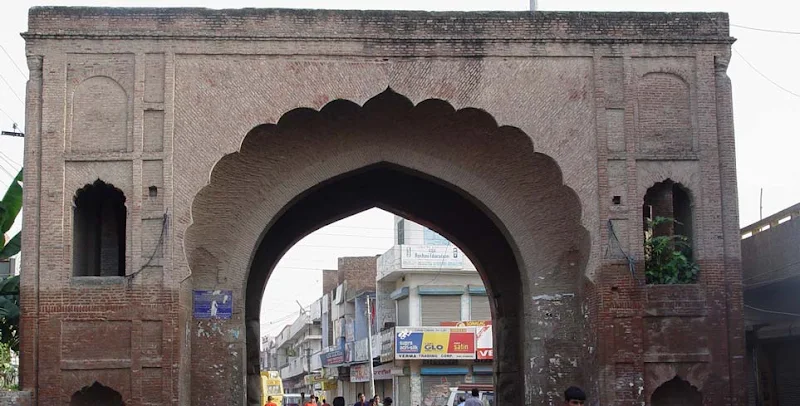
As you delve deeper into Panipat’s rich tapestry, you’ll find the majestic Salar Gunj Gate, an architectural marvel named after Nawab Salar Jung. This historical structure stands as a testament to the grandeur of Panipat’s past. The gate’s significance isn’t just in its imposing presence, but also in its intricate design, which reflects the city’s bygone eras.
Constructed during the zenith of Mughal influence, the Salar Gunj Gate inherently serves as a gateway to understanding the expanse of their empire. Here, the utilitarian meets the beautiful; the gate functioned as a point of entry and exit for the old city while simultaneously showcasing the Mughal’s affinity for imposing structures.
Discovering the Architectural Splendour
When you approach Salar Gunj Gate, prepare to be greeted by an imposing structure framed by history. Its detail-oriented architecture provides an excellent glimpse into the craftsmanship of the period. Observing the detailing around the arches and the motifs that adorn the gate will transport you to a time when Nawab Salar Jung himself might have passed through these very portals.
Walking through the gate’s large passages, you’ll notice shadows and echoes from the past converging with the vibrant culture of the present. A symbol of formidable strength and cultural integrity, the gate has withstood the test of time and remains a proud fixture for the residents of Panipat.
Legacy Woven into the Present
The cultural importance of Salar Gunj Gate goes beyond its physicality; it’s etched in the everyday life of Panipat’s inhabitants. Stroll around the vicinity and you’ll find local markets brimming with vitality, offering everything from traditional textiles to artisanal crafts. The gate isn’t just a historical monument but a living, breathing part of the city’s current socio-economic landscape.
To experience the blending of the past with the pulse of contemporary life, there’s no better place than the area around Salar Gunj Gate. It’s where you’ll taste the rich flavours of local street food as stories of yesteryears fill the air, creating an immersive experience that mirrors the multifaceted nature of Panipat itself.
What is Panipat Famous For?
Stepping into Panipat, you’re stepping into a page from history. Famed for its epic battles, this city is where the course of Indian history changed multiple times. But there’s more than just battlefields. In the tales of the Mahabharata, Panipat was one of the five cities founded by the Pandavas, making its cultural roots deep and significant.
As you explore this ancient city, you’ll discover landmarks that have stood the test of time. Each corner of Panipat is imbued with stories waiting to be unfolded. The architecture, the monuments, and the traditional markets—all weave a rich tapestry of the past that’s seamlessly integrated into the present. The city is also famous for EGERP Panipat – a well known company.
How to Reach Panipat
- Air: Fly into Indira Gandhi International Airport in Delhi or Muzaffarnagar Airport, and you’re just a step away from Panipat.
- Rail: The Panipat Railway Station connects the city with several major destinations, making it convenient for train travellers.
- Road: Well-linked to Delhi, Ambala, Sonipat, Karnal, and Jind, reaching by bus or driving down is hassle-free.
Accommodations in Panipat cater to a range of preferences. Whether you’re looking for a budget-friendly option or more comfortable 3-star hotels, you’ll find a place to suit your needs seamlessly. The well-organized hotel infrastructure ensures a comfortable stay as you delve into the city’s vibrant past and present.
Eating and Shopping
Panipat’s culinary scene is as rich as its history. Local eateries like Vikrant Dhaba and Sunny Vaishno Dhaba offer authentic tastes of the region. For a quick bite, iconic fast-food joints like Friends Fast food and Krishna Fast food are a must-visit. You can enjoy traditional textiles and artisanal crafts near the majestic Salar Gunj Gate, where shopping becomes a cultural experience in itself.
Dine and shop where history comes alive, and let the city’s heritage envelop you.
Famous Markets in Panipat
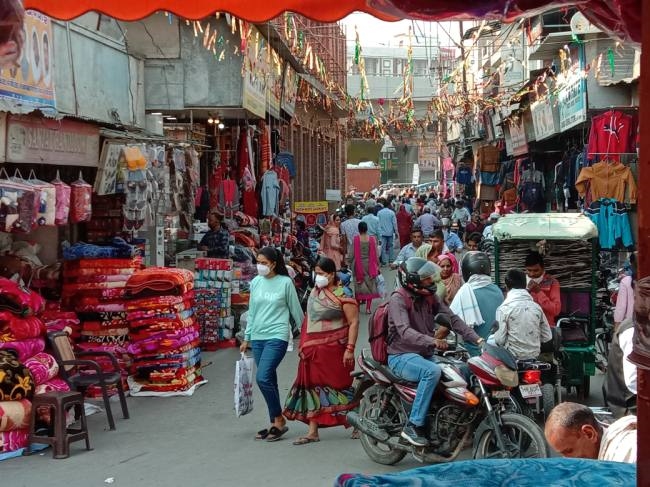
- Palika Bazaar
- Rajputana Market
- Pachranga Bazaar
- Subhash Bazaar
While exploring Panipat, you’ll find that the city’s markets are as rich in history as they are in goods and crafts on offer. Panipat’s vibrant markets are the heartbeat of the city, bustling with activity and brimming with the promise of discovering something unique.
Your journey through these markets starts at Palika Bazaar, a hub for traditional wares, reflecting the local culture in each of its lanes. You can’t miss Pachranga Bazaar either, famous for its pickles—a culinary delight that captures the essence of Haryanvi flavours. Admire the craftsmanship of the artisans as you meander through the historic Rajputana Market, witnessing a blend of past and present in every item on display.
Next on your list should be the L Market and Subhash Bazaar—the go-to places for textiles and spices. It’s in markets like these where you’ll truly grasp the economic pulse of Panipat. Here, handloom products emerge as a clear testament to the city’s major contribution to the textile industry. In fact, Panipat’s handloom sector accounts for a significant 30% of the total exports from the city.
If you’re looking to bring a piece of Panipat back home, you’ll be pleased to find the finest blankets and carpets that are renowned across the country. These aren’t just items for sale; they’re stories woven into fabric, memories crafted into every pattern. Alongside these, the market’s selection of handicrafts, traditional foods, jewellery, and much more offers a shopping experience that is as varied as it is rich.
Remember, every purchase you make not only gives you a piece of Panipat’s rich tapestry but also supports the local artisans and the continuation of their age-old crafts. As you roam these markets, you’re walking through living history, where each alley and stall has its own tale to tell.
Frequently Asked Questions
What is the old name of Panipat?
Panipat was historically known as Panduprastha, indicating its origins linked to the Pandava brothers from the Mahabharata.
What is Panipat famous for shopping?
Panipat is renowned for its export-quality textiles, including blankets, bedsheets, mats, and carpets, known across India.
Which is the gangster village of Panipat?
The Siwah Village in Panipat’s Haryana District has a reputation for a high incidence of criminal activities among its youth.
Why is it called Panipat?
The name Panipat is derived from its historical association with the Pandavas as Panduprastha and is famous for witnessing three significant battles in Indian history.
Is Panipat a good place to live?
Panipat, known as the “city of weavers,” is famous for its textile and carpet industries and offers good connectivity, making it a considerable place to live.





